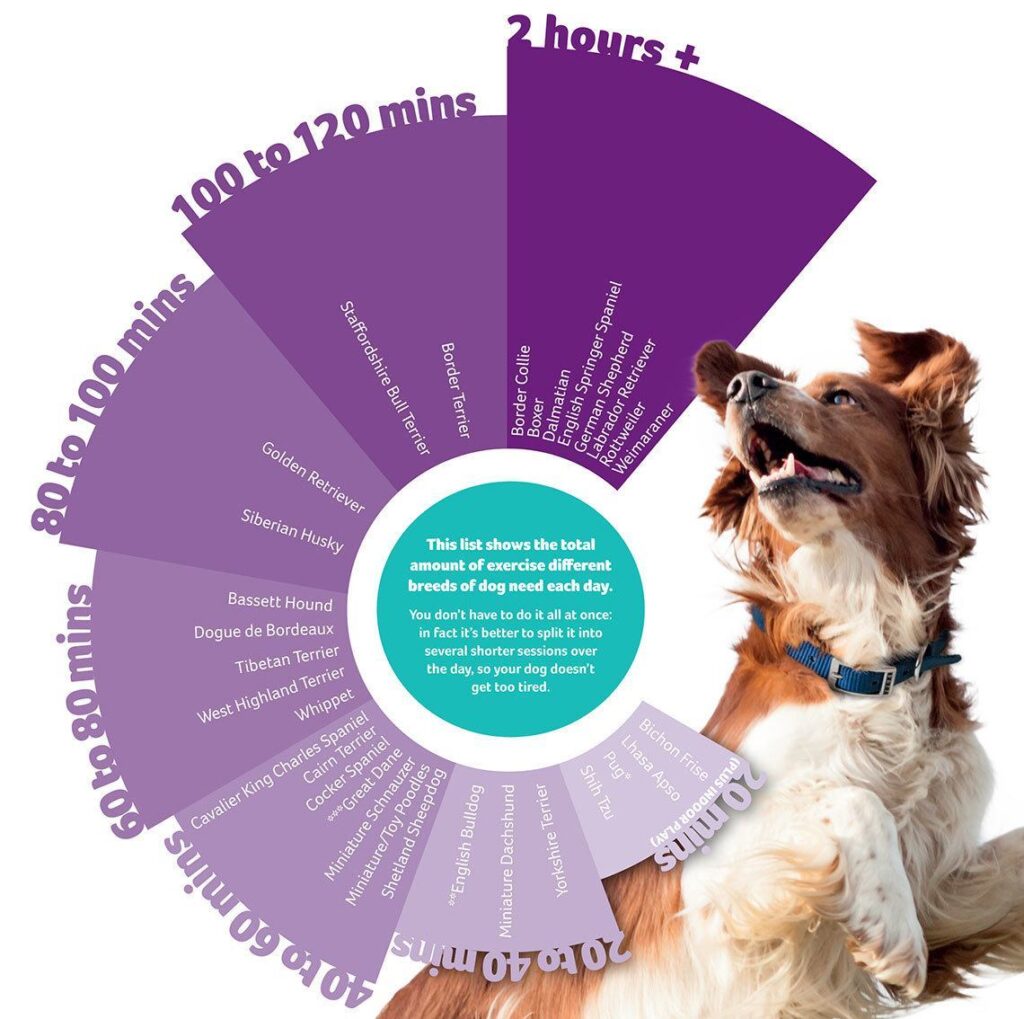If you own a dog, you’ve most probably asked yourself the question – how much daily exercise does my dog really need? It’s a question most responsible pet owners will carefully consider when they select which breed of dog to introduce into their family, as we all know our dog’s physical stimulation is crucial in keeping their weight, physical and mental health and vitality in check.
Committing to a daily exercise regime for your pooch can:
- Increase life expectancy
- Improve pet behaviour and toileting habits
- Improve your own physical fitness and mood
- Decrease likelihood of obesity, diabetes and respiratory disease
- Improve joint mobility
- Provide mental and physical stimulation
- Reduce boredom, depression and anxiety
Your dog’s breed and overall health will heavily influence how much daily exercise you’ll have to commit to. Too often we see owners of high-energy working dogs like Kelpies or Cattle Dogs frustrated with undesirable behaviours like escaping and being destructive, which more often than not stems from boredom or a lack of stimulation. On the other end of the scale, we also see lots of animals in the clinic with injuries caused by over-exertion and over-heating, where toy or brachy breeds like Pugs and Poodles are pushed beyond their physical limits. And don’t even get me started on the health complications we encounter when dealing with overweight animals! Much like us humans, when your dog doesn’t get enough exercise, their metabolism will slow down and energy levels tend to drop whilst their waistlines expand.

The best way to decipher how much exercise your dog needs every day is to consider their breed, age and general health. Once you’ve got a fair idea of how long you’ll have to commit to walking them every day, you can work it into your routine so that no matter the weather, your schedule or how tired you are, Fido will rest assured knowing he’ll be getting his daily dose of physical and mental stimulation. If you haven’t yet bought your four-legged best friend home, perhaps consider your current lifestyle before purchasing a dog who requires more exercise than you can realistically commit to. Having good intentions to ‘start walking’ once you get a dog won’t help you in the long run – it’ll just leave your pooch looking at the leash longingly.
Being honest about how much time and energy you can truly to commit to getting up and getting outdoors with your pooch will help you to cater to their physical requirements for the next 10-15 years.

Image courtesy of chums-online.co.uk
Things to keep in mind:
- You’ll have to adjust your exercise schedule to accommodate young puppies (who require more frequent, shorter play sessions rather than big runs) and ageing doggos who prefer to be taken for casual strolls on the leash than let loose for free-reign rumbles at the dog park.
- Keep an eye on your dog’s waistline to ensure you aren’t overfeeding or under-exercising
- Shake it up – exercise doesn’t have to mean walking around the block every day. Taking your dog with you to the beach for a swim, on a hike in the hills or even to kick a ball around at your local soccer field can help to keep you both committed to your cardio.
- Don’t forget general play and stimulation through toys/food puzzles/hide and seek rewards etc. If all you are doing is running a working breed you are absolutely going to make it fitter, with more energy to burn and longer lasting enthusiasm for getting into trouble. Exercising the brain is equally as important as exercising the body, in next month’s newsletter we will delve into the world of the Brain Games.
If you’d like to book and appointment to discuss your dog’s breed, exercise requirements and general health, please don’t hesitate. We are very passionate about helping responsible pet owners to understand their pet’s needs, so that we don’t end up seeing your poorly pet later on down the road.

